If there’s one aspect of our blogging we’ve wanted to take to a higher level over the years it’s definitely our travel photography.

Being a travel blogger photos play a huge role in what we do, a picture tells a thousand words as they say, so taking the best photos of the destinations we visit is an important way of telling the story of each place.
I’ve always loved taking photos of our travels and I think I have a pretty good eye for composing a shot, but over the years I’ve been frustrated with my slow progress in getting better at photography.
Sure I’ve taken some good shots in the past and my photos typically look nice in camera, but when I download them to my computer and onto the blog more often than not I find my photos don’t do justice to the beautiful places I’m shooting at.
A major challenge over the past 12 months has been lack of time to dedicate to photography. Being on the road full-time around Australia with young kids and running our blogging business has been harder than we anticipated.
Our time is stretched thin on many tasks.
The times we need to be out shooting in the best light (early morning and late afternoon when the light is soft) is peak hour in our household with home-schooling and meal times. So more often than not we’ll find ourselves out doing activities in the middle of the day when the lighting is harshest for photos.
Even then, two young kids don’t like waiting around whilst I set up a tripod or take hundreds of shots. Or, I’ll have the perfect shot composed and then one of them will jump on me and the moment is lost. And having a three-year-old on your shoulders whilst hiking and taking pics is never good for camera shake ha ha.
However, without having the time I would like to be out on location and practicing by taking hundreds of shots, which is what I need to be doing, there’s one thing that has enhanced my photos in a big way on this trip.
Better lenses!
If there’s one thing that has improved our photos it’s been moving away from kit lenses, and using the right focal length for the right shot.
Many thanks to the folks at Canon Australia for loaning us the lenses down below for our trip around Oz. They’ve certainly helped us capture better family memories.
Thinking about lenses

If you’re like me, when I first started thinking about lenses I only knew I needed a zoom lens for our 2003 trip to shoot photos of lions in Africa, without being too close to them.
That’s what I thought lenses were for – helping you zoom. And I only ever owned kit lenses that came with the camera body purchased.
I never realized that a good lens is just as important, if not more, than the camera body itself. “Spend more money on the glass” is a comment I’ve heard many times.
Sure, there’s more to it than buying a $2,000 lens and just clicking away. You need to understand the basic functions of your camera, at least get yourself out of auto mode and shoot in aperture priority. And a solid understanding of shutter speed, composition and using light will greatly enhance your results.
We currently have four lenses we carry around in our bag. I’ll share them with you now and explain what we use each lens for.
But firstly, a question we’re constantly asked, ‘what camera body do we use?’
We shoot with Canon
Our camera body is a Canon 700D which is the Rebel T5i for you folks in the US, and it’s been a great introductory DSLR camera.
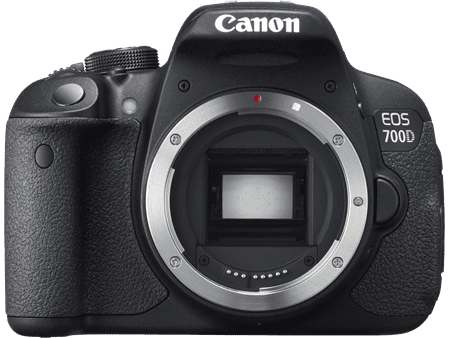
We’ve only ever used Canon – all the way back to the old SLR and point and shoot days, and have always felt comfortable with them in our hands. So we like to stick with what we know and enjoy.
Our landscape lens
Over the past 12 months, we’ve been using a 10-22mm f/3.5-4.5 lens. It’s a wide-angle lens perfect for landscapes.
I like using this lens as it really opens up the scene and displays more of what we see with our naked eye. At 10mm, it offers a much wider field of view than anything I’ve ever used before, just be mindful it can really push out the horizon and edges of each frame. I generally use it at the 17-22mm range.
A tip I’ve learned with this wide angle is it’s super important to fill the foreground with an interesting subject and make the first 30% of the shot strong, especially at 10mm otherwise my photos can be a bit blah.
On my travels, I like to take a lot of beach photos and since using this lens my beachy pics have improved considerably.
They’ve gone from something like this:
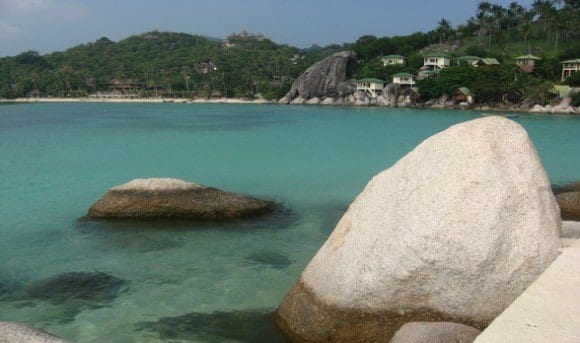
To this:
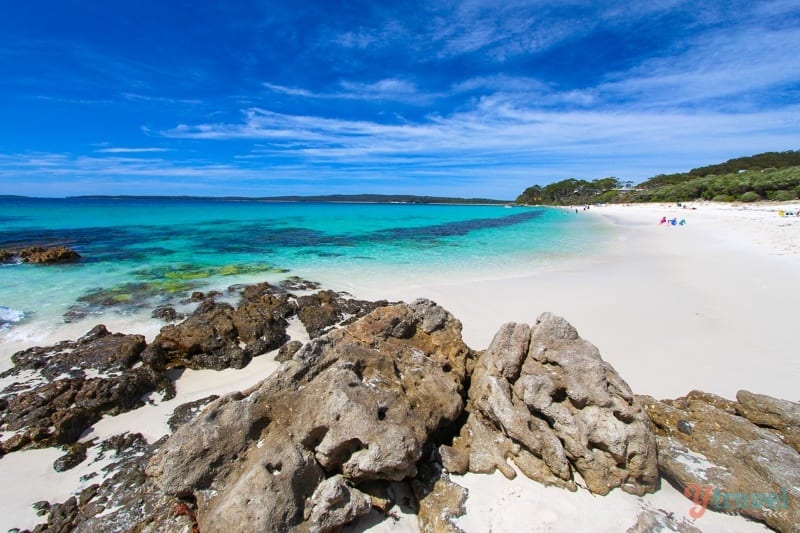
Another beach shot from Loch Ard Gorge on the Great Ocean Road:
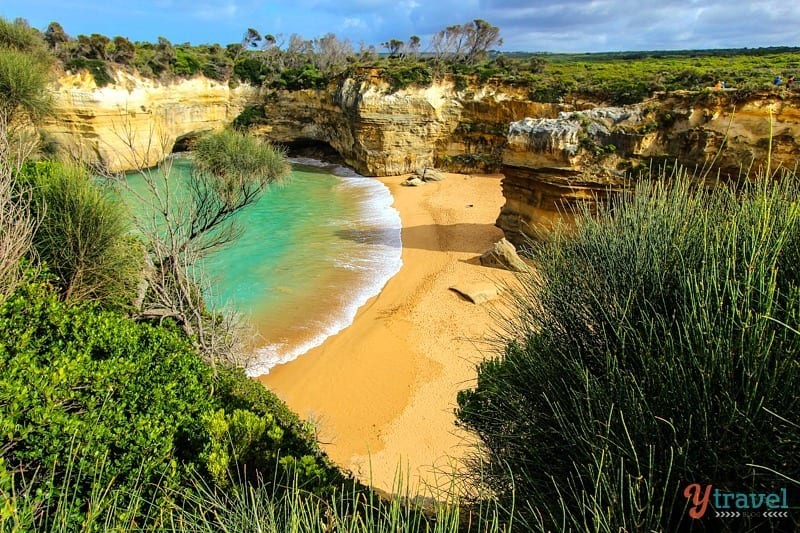
And a sunset from Kakadu National Park:
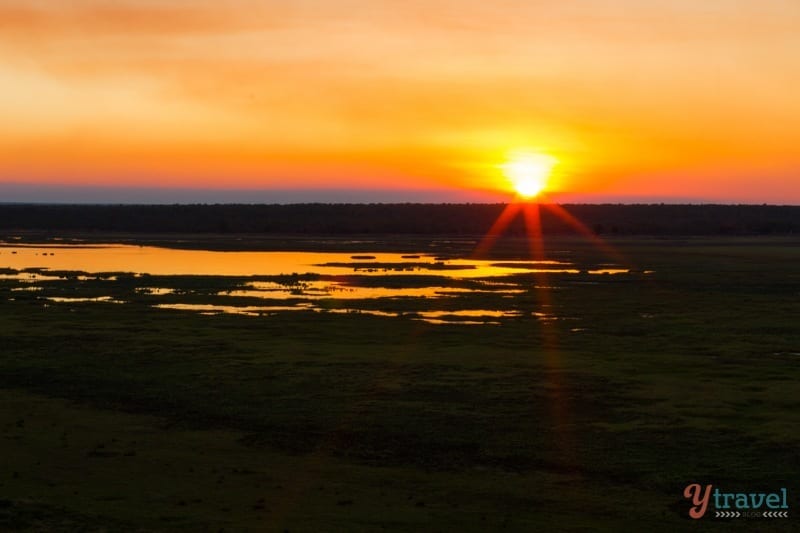
The above photos are a massive improvement on my previous work. So if you love taking landscapes, consider a wide-angle for your kit.
Our Food and Portrait lens
We have the 50mm f/1.4 prime lens and our images have vastly improved from our old kit lens.
What I like about using this prime lens is it forces you to move your feet and teaches you to think about composition more, as you don’t have the luxury of simply zooming in to frame your shot.
Besides food and portraits, this is actually a great all-round lens that I sometimes just take out for the day and leave the rest behind, as it’s small and light and has a great aperture range from f1.4 to f22.
Whilst waiting around for the sunset one evening in Tasmania we threw our camera on the tripod and snapped this family pic:
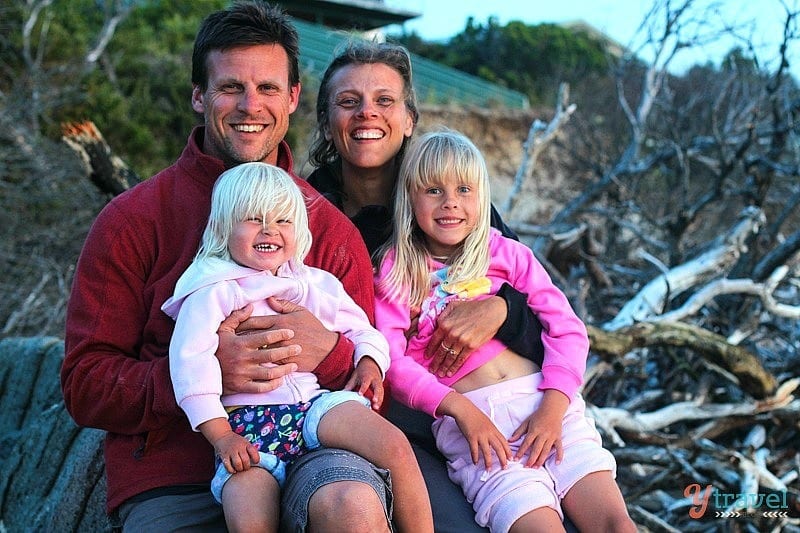
If you find yourself in Western Australia, you must visit Broome, and don’t miss the Mangrove Hotel and sink your teeth into a venison pizza and some popcorn chicken. Taken with our 50mm:
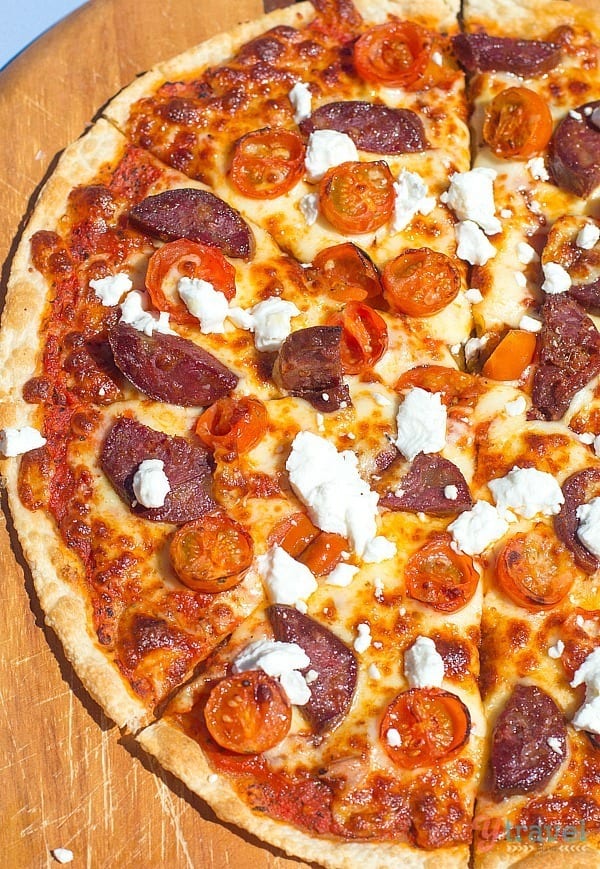
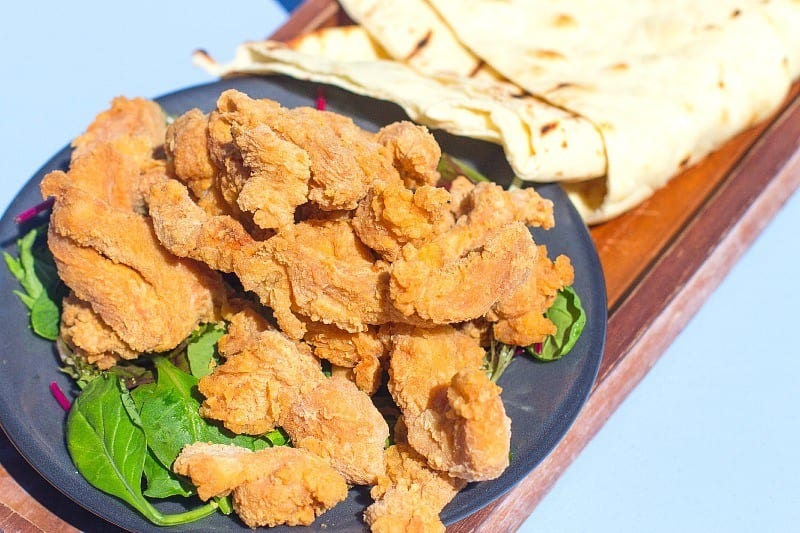
I’ve also used this 50mm lens quite a bit for landscapes. Here’s a recent sunset shot from Cable Beach in Broome showing its versatility:

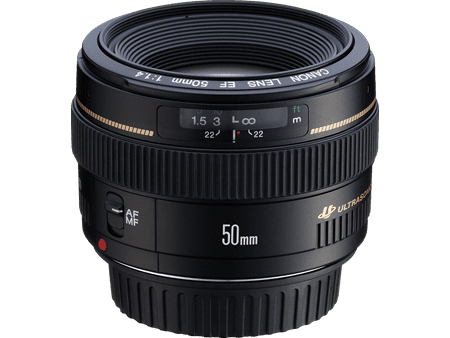
Our Macro Lens
We haven’t taken many macro shots on this road trip, but when we do we have the 60mm f/2.8 Macro lens at our disposal.
From time-to-time we’ve also used this lens as a standard 60mm fixed focal length lens and have been happy with the results.
Here’s an example of one macro shot we took:
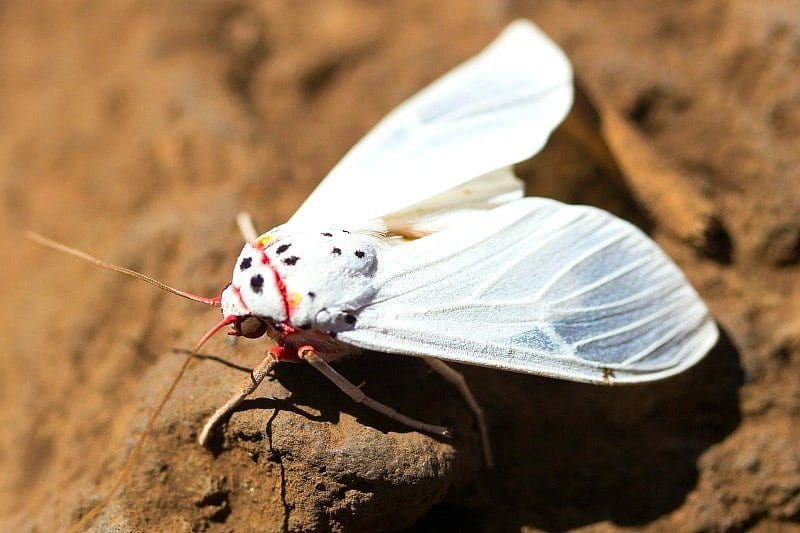
I think I need to take this lens out of the bag a bit more and play around with it, especially with some of the gardens, flowers and bugs we have seen around.
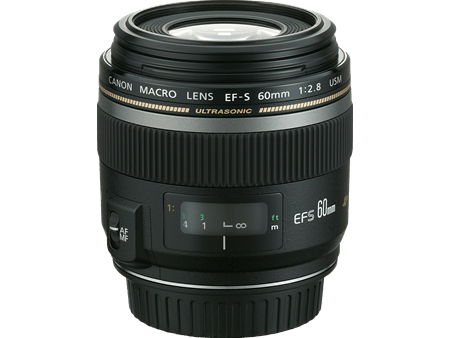
Our Wildlife Lens
This is our old kit lens from our first SLR many years ago for our trip to Africa in 2003. When we do go back to Africa we’ll definitely be upgrading on this, but I still use our 75-300mm f/4-5.6 zoom lens fairly often.
I love the sharpness of this lens, and it came in very handy for zooming in on the cheetahs and Ring-Tailed Lemurs and other animals when we took the kids out to the Dubbo Zoo in Country NSW earlier this year.
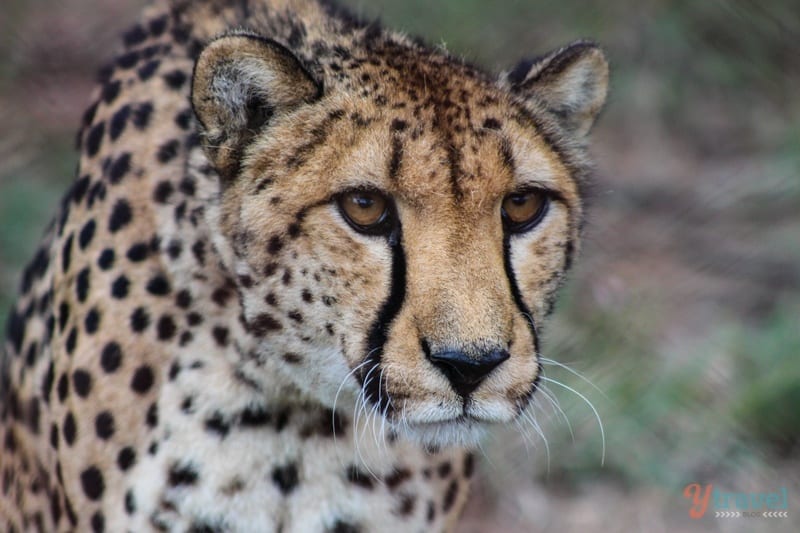
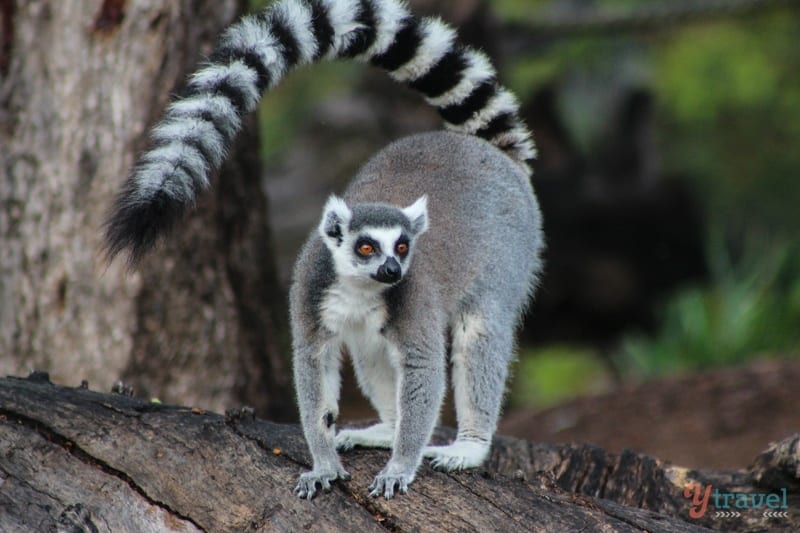
Handy tips
I’m certainly not a pro but here are some basic tips I’ve learned recently in my quest to go from an enthusiast to a more skilled photographer:
- Think about what lens is best for the type of photo you’re taking and what aperture to use on that lens. Each lens has a “sweet spot” at which it performs best, usually in the middle of its aperture range, around f/8 or f/11.
- For sharpness and to avoid blur your shutter speed should match the focal length of your lens, I actually try to double it. e.g. when using my 50mm lens I go for a shutter speed of 1/100. On my 300mm, I go for 1/600
- Use a tripod in low light. To get more light into the lens, your camera will adjust exposure and shutter speed and with a slower shutter speed there is risk of camera shake and unwanted blurring.
Moving forward I’m committed to dedicating more time to learning the art of photography and getting more knowledgeable on all the technical aspects and equipment.
But for now I’m a prime example of simply using better lenses gets you better photos, and that’s what we all want right?
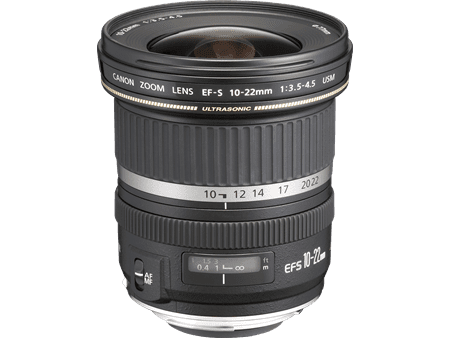
I can certainly relate to enjoying photography and wanting to get great pictures, but not having the equipment or technical skills. Photography is a favourite hobby of mine and while I would really like to get more serious about it, I can’t justify the cost at this point in time.
I take all my photos with a point-and-shoot digital camera or my phone, occasionally I’ll use the gopro. For me the top priority in a camera for travel, as well as taking decent photos, is for it to be tough. That means waterproof, sand-proof and freeze-proof.
Hi Bonny, yeah the cost is always a factor like everything, it’s the same with me wanting a full-frame. Just start with an entry level DSLR, and our 700D has been good value for that.
I use two systems now: A Olympus micro four thirds and a full frame Nikon d610
http://jimmyeatsworld.com/2014/01/15/travel-photography-gear/
It’s quite a bit of weight to lug around but I made a conscious decision to improve my photography big time, not just in taking photos but also in post processing. My top three tips are:
1 – Invest money into good lenses. Camera bodies will always chance but you will stay with good lenses for years and years. Buy the best the you can afford.
2- Invest time into education. There’s so many good youtube channels out there run by awesome photographers who provide free tutorials
3 – Post process your photos. Even the best out of camera shots still require sharpening and some corrections to the whites and blacks. The new software out there can also improve the limitations of cheaper lenses so if you can’t afford good lenses, image quality can still be vastly improved with programs such as Lightroom.
4 – I’ll add another point and that’s to have fun and be patient. Good photos take time for the right light and also for the right subject matter to come along. If you have children then it’s a good time to have fun with them as well and practice portraiture and posing shills.
Hey Jimmy,
Yeah there’s always the compromise of having too carry too much. I’m used to carrying “stuff” with two young kids so it doesn’t bother me that much, but I’m getting better at just taking out what I need for that day.
Great 4 tips you just shared. I do use Lightroom 4 but could also do with getting better at using that software to it’s potential 🙂
I also shoot with a Canon lens (650D) and when travelling in southern Africa lately I have mainly used the Tamron 18-270mm. Due to its focal length it is not the sharpest lens out there. But knowing I would be taking photos with a lot of dust around, I took this option. This in order to avoid fine sand in the camera by changing lenses. Now I am looking for some other options, and this articles made me think about it again 🙂
Hi Sabine,
Glad you found the post useful. I would love to go back on safari in Africa with my improved skills since 2003 and shoots some wildlife with a kick ass lens 🙂
Certainly some high quality images and equipment sure does make a difference.
Just a bit of quick advise. I am sure you already know this but wanted to mention it in case you didn’t and then you were heart broken, but your wide angle zoom and your macro will not work when you are able to upgrade to full frame.
Hey Garrett,
Equipment is not everything, but it certainly helps. You can’t build a house with a plastic hammer 🙂
Yes some considerations in regards to going full-frame, but it’s definitely the next step I think we need to take, besides just getting out in the field with a pro and just shooting, and learning lots online through tutorials.
I’d love to invest in better lenses, I’m using a Canon 650D with the 18-55mm and 75-250mm kit lenses. I just wish I could afford to upgrade!
Hands down the most useful thing in improving my photography has been going to workshops. It was so valuable having an instructor there to give me feedback and offer advice – I improved in leaps and bounds!
– Petra @ http://www.theglobalcouple.com
Great idea to attend workshops Petra. I wish I’d done the same before our big road trip around Oz. I’d love to spend a few days out in the field with a pro and just shooting. I think I learn best out of a classroom, but in saying that I need to also watch and read more online tutorials.
I’m currently researching lenses for a RTW trip; this post was incredibly helpful. I’ve got the 50 mm f1.4 on my Christmas wish list! It’s great affirmation this is a helpful travel lens. Right now, I’m shooting with a kit 24-105mm and the 16 – 35mm wide-angle on the 6D. It takes solid photos but I’m trying to specialize more now and be able to do lower light photography.
Some other travel bloggers actually pointed out that for those “portrait money shots” we all aim for when we travel (the ones of humble, wise old locals in markets staring intently at you) may be hard to get with a larger lens simply because they’re more intimidating for the subject. A smaller lens is less threatening and easier to carry… thus the 50mm seems ideal.
I’m considering a fish-eye as a compliment to the wide angle and 50mm… It’s less practical in certain ways but it also takes such unique and fun photos that it can be a lot of fun. If anyone has had luck with a fish eye lens, I’d love advice on lenses!
Hi Katie,
The 50mm prime lens is a great addition to anyone’s kit.
Yeah, the temptation is there to stand back and zoom in the locals without them noticing. But I think don’t be afraid to walk up and ask people for their picture. Just smiling and being friendly goes a long way, remembering to take their needs into consideration and reading their body language and just being sensitive to any cultural issues. Spend time with your subject can bring some great natural shots too.
I haven’t used a fish eye lens sorry.
Was so interested to read this as I really see your photos improving a lot over the years. I really enjoy following you on Facebook especially for the gorgeous shots.
I’ve been working on my photography a lot this year, doing an online course. I bought a Canon5D Mark 1 on Ebay with a 35 – 70mm lens, at a good price… then let the kids use it and smashed that lovely lens at Dubbo Zoo – nooooooo. I got the 50mm 1.4 which is great and recently splashed out on a 16-35mm lens, very expensive but so good. I’m aiming for a new full frame camera in 2015, back to work!
Glad you’ve noticed some improvement in our pics Seana 🙂
Yeah it’s always a little bit concerning letting our kids play with expensive toys.
PS One of the big things I’ve learned is how to tweak photos in Adobe Camera Raw and in Photoshop, a few wee things can do a lot to improve my shots. I used to use Lightroom which was good too. Can you do a post on your ‘digital darkroom’ techniques one day and how you manage all that on the road. Sorting photos takes SO long… but so worth it.
PPS I so understand about the best light being at the busiest family times!!
I actually need to get better at this side of things too and put in place better management of our photos. It’s something I could write about later on through learning more.
Great post, Craig!
I really enjoy shooting with prime lenses. As you say, it forces you to move your feet and use your brain.
There is an additional and powerful benefit: when shooting people with a wide angle prime lens, you are forced to get closer to your subject, which pushes you outside your comfort zone. It’s a fascinating social experiment and confidence builder. When I’m on the streets shooting with a prime lens (28mm / f1.8) I tell myself: “get outside your comfort zone… then take a step further”
I encourage everyone who is interested in taking photography to the “skilled” level to own a prime lens.
— 1/2d @ http://www.mediod.com
Great additional tip. “Getting outside our comfort zones” is a great mantra for all things in life.
This was a really useful article Craig. It’s true your amazing travel memories can be let down by not having the skills to take the right shots, it’s great to see examples of different lenses explained in less technical terms. Bookmarking for future reference!
This post was really helpful. I am hoping to get an internship in either England or Ireland this next Aug- July and I am really into photography so I was looking at what lenses to get and I’m now for sure going to get a wide angle lens. I currently have a 18-105mm 50mm and 35mm. I would like to get a 300mm zoom lens but do not have that kind of money since I’m just graduating college!
any other tips would be greatly appreciated.
I found this so useful as I am on Day 3 of my new Canon Rebel t5i. Today I am pouring over youtube videos and pointers and I found this blog. So helpful and I appreciate the simplicity in the explanation for an amateur like myself. I am using my camera to mainly photograph events, portraits within my family. Can you tell me what lens is going to be best for shooting my son’s baseball games? Is it possible for you to do a rundown on what flashes are best for general use?
Hi there. I have a canon 650D love to take a lot of sunsets / rises what wide angle lens would be a good lens to bring out the sharpness of the shots
Hi Heather. The wide angle lens I shoot with for landscapes is the Canon EF 16-35mm f/2.8L II USM. The fixed f/2.8 aperture is great for sharpness and depth-of-field control. It’s not cheap though, and depends on how serious you are about your photography. You can check it out on Amazon and read the reviews via this link: https://www.ytravelblog.com/canon-landscape-lens
Alternatively, here is a full list of Canon landscape lenses on their website: https://www.canon.com.au/en-AU/Personal/Products/Cameras-and-Accessories/Camera-Lenses
Hope that helps!
Great, It s awesome when we discovery the powers of great lenses. Now we use Canon 7 D mark II and lens Canon 24-70 m f 2,8 and 70-200 f2.8 and it was awesome to have these lens special in our adventure trips to the Amazon in Brazil
Two great lenses right there Mister Brazil 🙂
Love your photos and videos. Curious if you use the same camera for both or if you pack a separate video camera. Love my Canon Rebel but feel I will really eat up SD card space if I shoot video on it too. Thanks for your input!
Now we use a Panasonic Lumix for most of our videos, and the Canon for photos.